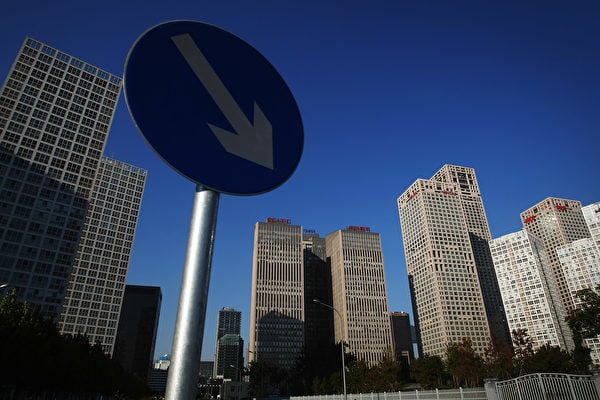After the Chinese Communist government forcefully launched measures to rescue the real estate market, in June, prices in 70 large and medium-sized cities continued to decline, with the price drop of newly built commercial housing reaching a nine-year high.
According to data released by the National Bureau of Statistics of China on July 15th, the statistics show that in June, sales prices of commercial residential properties in various cities across the country were still decreasing compared to the same period last year.
In first-tier cities, the sales prices of newly built commercial residential properties decreased by 0.5% month-on-month, narrowing by 0.2 percentage points compared to the previous month. Among them, Beijing, Guangzhou, and Shenzhen fell by 0.6%, 1.2%, and 0.7% respectively, while Shanghai rose by 0.4%. Second-tier cities saw a decrease of 0.7% and third-tier cities a decrease of 0.6%, both showing a slight narrowing compared to the previous month.
Regarding existing homes, in first-tier cities, the sales prices declined by 0.4% month-on-month, with Beijing and Shanghai seeing their first increases this year, rising by 0.2% and 0.5% respectively, while Guangzhou and Shenzhen dropped by 1.5% and 1.0%. In second-tier cities, prices decreased by 0.9%, and in third-tier cities, prices also decreased by 0.9%.
Furthermore, in June, the year-on-year decrease in sales prices of newly built commercial residential properties in first-tier cities expanded to 3.7%, with Beijing, Guangzhou, and Shenzhen decreasing by 2.4%, 9.3%, and 7.7% respectively, while Shanghai rose by 4.4%. In comparison to the previous year, second and third-tier cities also experienced declines of 4.5% and 5.4%, with the decreases expanding by 0.8% and 0.5% respectively compared to the previous month.
For existing homes in first-tier cities in June, the year-on-year decrease in sales prices widened to 9.0%, with Beijing, Shanghai, Guangzhou, and Shenzhen showing declines of 7.8%, 6.3%, 12.4%, and 9.5% respectively. In second and third-tier cities, prices fell by 7.9% and 7.7% year-on-year, with the decreases expanding by 0.4 percentage points in both cases compared to the previous month.
In May of this year, the Chinese Communist government introduced a series of “historic” measures to stimulate the real estate market, including reducing the down payment ratio, lowering the interest rates on housing fund loans, canceling the lower limit on mortgage rates, and using unsold housing as public housing. Many Chinese media outlets described this policy as “epic,” while Reuters referred to it as “historic,” and prominent Chinese economist Ma Guangyuan called it a “historic turning point.”
Despite the announcement of these policies, the stagnation in the Chinese property market has not improved. According to relevant data, in May, the year-on-year decreases in sales area and sales volume of commercial housing were 16.1% and 24.3% respectively, with price decreases in various cities expanding year-on-year.
Reuters cited analysis from economist Harry Murphy Cruise of Moody’s Analytics, who stated in a research report that the recent support measures are a step in the right direction but still fall short considering the scale of the problem. Cruise emphasized that the real estate sector has deep roots, and when it suffers, the entire economy feels the pain.
While the Chinese authorities have lifted some restrictions on home purchases to boost market sentiment, Reuters suggests that more stimulus measures may not be able to support price declines. The report quoted Zhang Dawei, Chief Analyst of Centaline Property Agency Limited, saying, “The fundamental supply-demand structure of the real estate industry has undergone a reversal. (The market) does not need to have overly high expectations for the effects of the policies.” Zhang added, “The future of the real estate industry is unlikely to see overall growth.”

